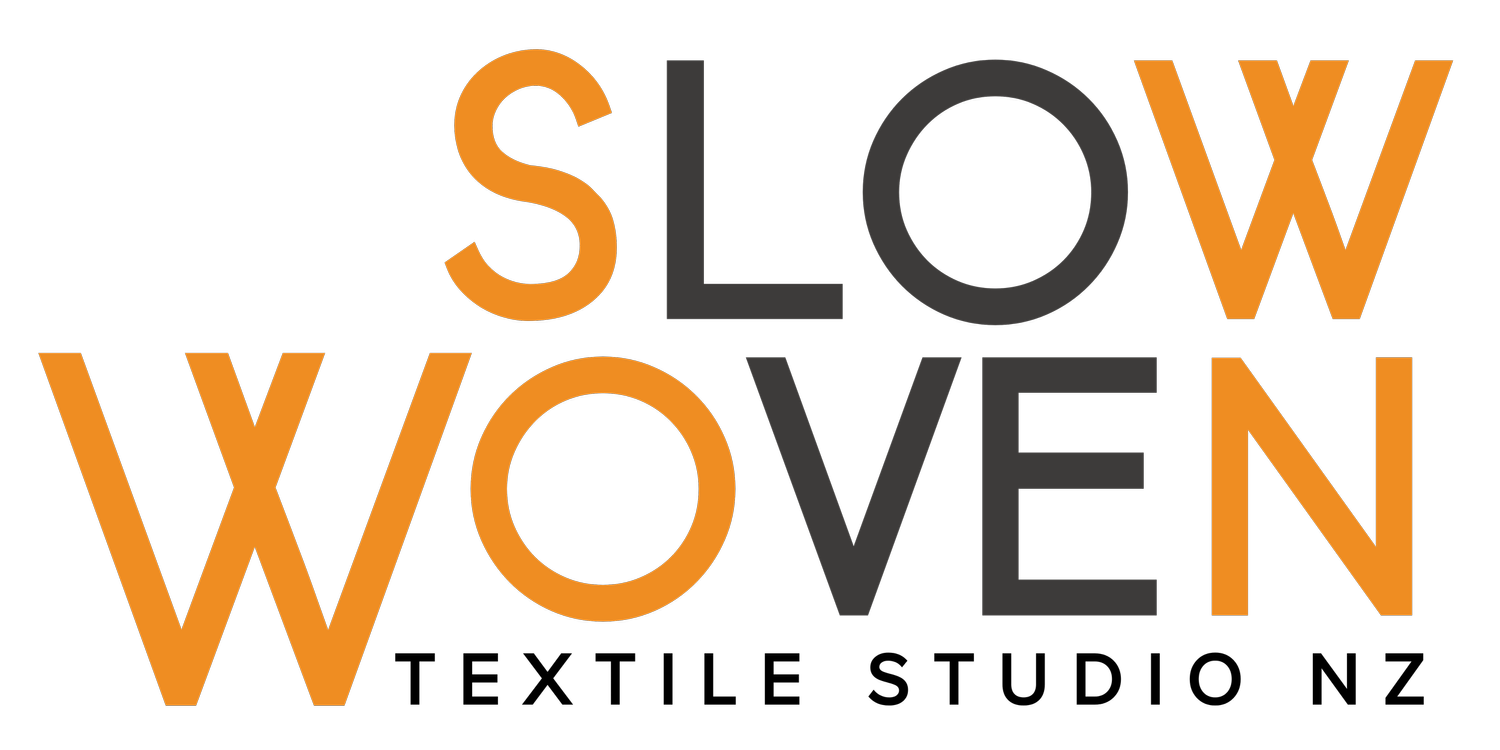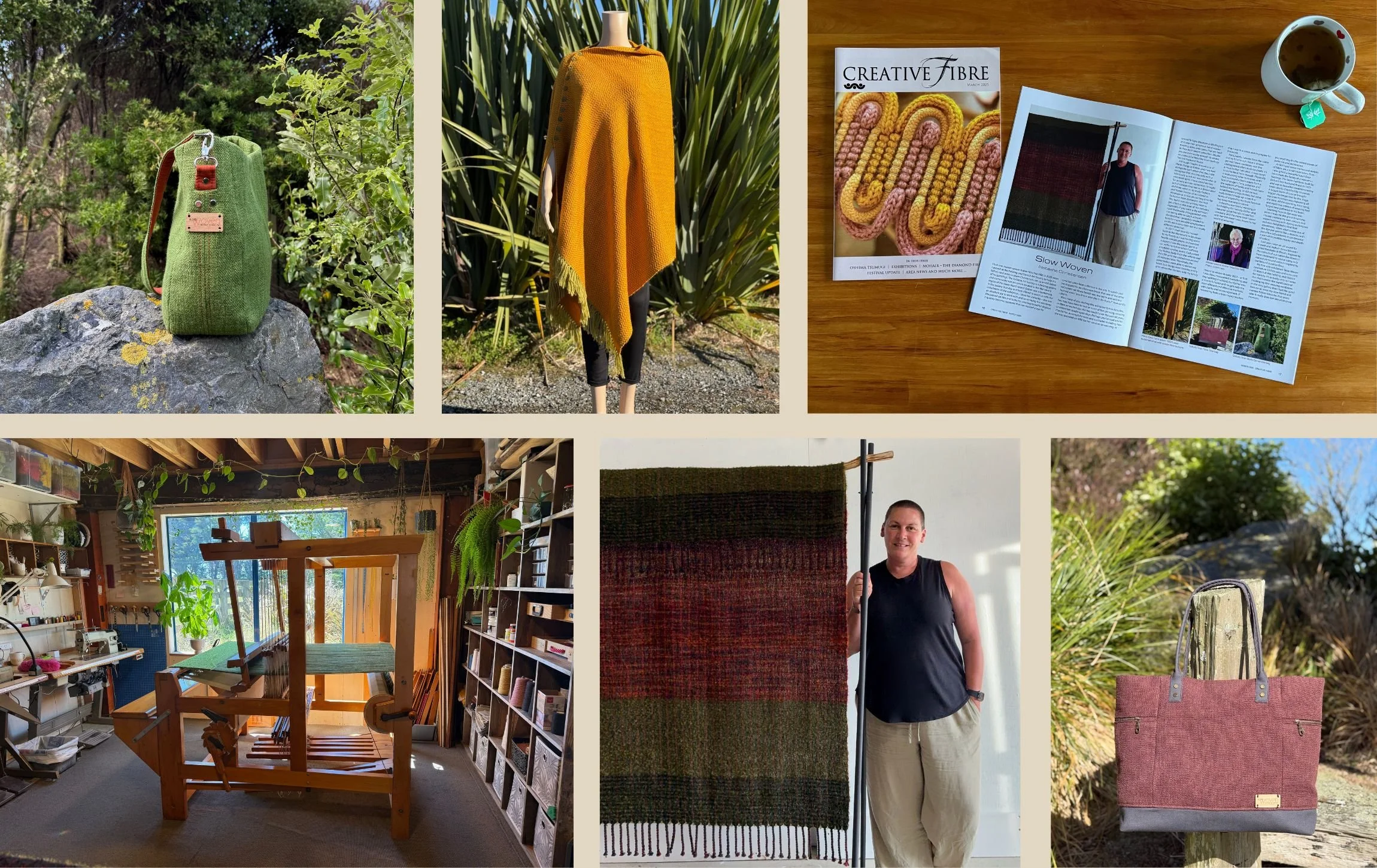Creative Fibre magazine - March 2025
Way back in March I had an article published that I wrote for a New Zealand magazine called Creative Fibre. I thought it would be fitting to publish it here as my first blog post.
I first met master-weaver Esther Nitschke MBE in 2020 when I arrived at the Feilding and District Art Society to help my father, rural artist Graham Christensen, set up an exhibition of his paintings. The Feilding Art Society is a thriving gallery and community-run art centre located in the Manawatu region of the lower North Island.
Esther was volunteering in the gallery that day and had offered to assist us with the installation of the exhibition. I liked her instantly – she was an absolute joy to work with and as we hung the paintings she passed on tips and tricks for creating beautiful displays. It quickly became apparent that her masterful eye for curation came from a lifetime in the arts.
It wasn’t until we stopped for an afternoon break that one of the other volunteers sat down beside me, leaned in and said in a hushed voice “you know who she is don’t you?” Awkwardly I didn’t.
Now many of you reading this will know Esther Nitschke. You will have been to one or more of the spinning, weaving or fibre art workshops she has taught over the past 60 years, or visited her studio open days. Perhaps you’ve read articles that list her accomplishments and accolades including how she was awarded an MBE for her services to weaving, or you have visited Te Papa Museum in Wellington and seen her gorgeous hand-woven evening dress and capes that are held in their permanent collection. Maybe you are even lucky enough to weave on a beautiful Nitschke loom built by her late husband Bruce.
Although I hadn’t known any of these things as Esther and I worked alongside each other that day, I did recognise that this tiny lady with a hilariously quick wit was somewhat of a kindred spirit.
I have loved textiles for as long as I can remember. Straight out of college I trained as a dressmaker and then went on to study Fashion and Textile Design at art school in Whanganui. It was an exciting time for fashion in New Zealand in the mid 90’s, but it was also a tricky time to get a foot in the door of the industry, especially if you are a shy kid from rural Manawatu. Disappointed with not being able to catch a break I decided that probably I needed to look for other employment and life went on to take me in a totally different direction.
In 2017 I had recently moved back to the Manawatu to be closer to my family as I was having some health complications and needed support. I was the passenger in a car with my father when I suffered a sudden cardiac arrest. Dad pulled my lifeless body from the vehicle and did CPR until the ambulance arrived 20 minutes later. Thankfully the paramedics were able to restart my heart, but things were looking pretty grim when the doctors told my family that I was in a coma and to prepare for the worst.
Fortunately I awoke from the coma and as it turns out I have a serious genetic heart condition called hypertrophic cardiomyopathy. Undiagnosed, it often leads to death. It’s a miracle that I am alive.
It was tough to come back from though. Physically it took a long time to recover, and I had sustained a brain injury from a lack of oxygen. Time, patience and the support of family and friends have helped my healing, as did various rehabilitation programmes, but what really kicked things up a notch in terms of improving my brain function has been learning to weave.
Following our fateful meeting at the Feilding Art Society, Esther and I became great friends. I loved her company and the more time I spent with her the more I was drawn to her world of weaving. I learnt to weave in early 2023 - at first I was slow, miscounted everything and kept getting muddled, but Esther was a masterful tutor and taught only the most efficient and effective methods with clarity and encouragement. Also, if recovering from a brain injury teaches you anything it’s the untold power of patience and persistence.
At first I just wove meters and meters of fabric on a small table loom. Then I was gifted a beautiful kauri floor loom from the family of a weaver in Hastings. The loom had been built by Esther’s late husband Bruce in 1977 and was in beautiful condition having been clearly cherished by its owner. A bigger loom of course brought bigger challenges but by this stage my brain function was improving all the time. All the counting, knot tying, and repetitive actions of weaving had forged new pathways in my brain.
Learning how to dye wool was when I truly hit the ground running. I loved creating my own colours and experimenting with dyeing techniques, and was delighted to find that sometimes when what comes out of the dye pot seems like a disaster - with just a few adjustments it can become a yarn of incredible beauty and depth of colour.
Last year I won an award for a wool and mohair throw blanket I called Harakeke in Bloom, inspired by the colours of our native flax flower. I have continued to weave only using natural yarns and colours inspired by our beautiful native plant life.
My first solo exhibition Slow Woven will run from the 15th of February to the 31st of March at the Feilding and District Art Society. It’s actually only as I write this that I realise the significance of holding my first weaving exhibition in the very gallery that I had the good fortune to meet my dear friend and mentor Esther Nitschke. Five years later it really does feel like a full circle moment.


